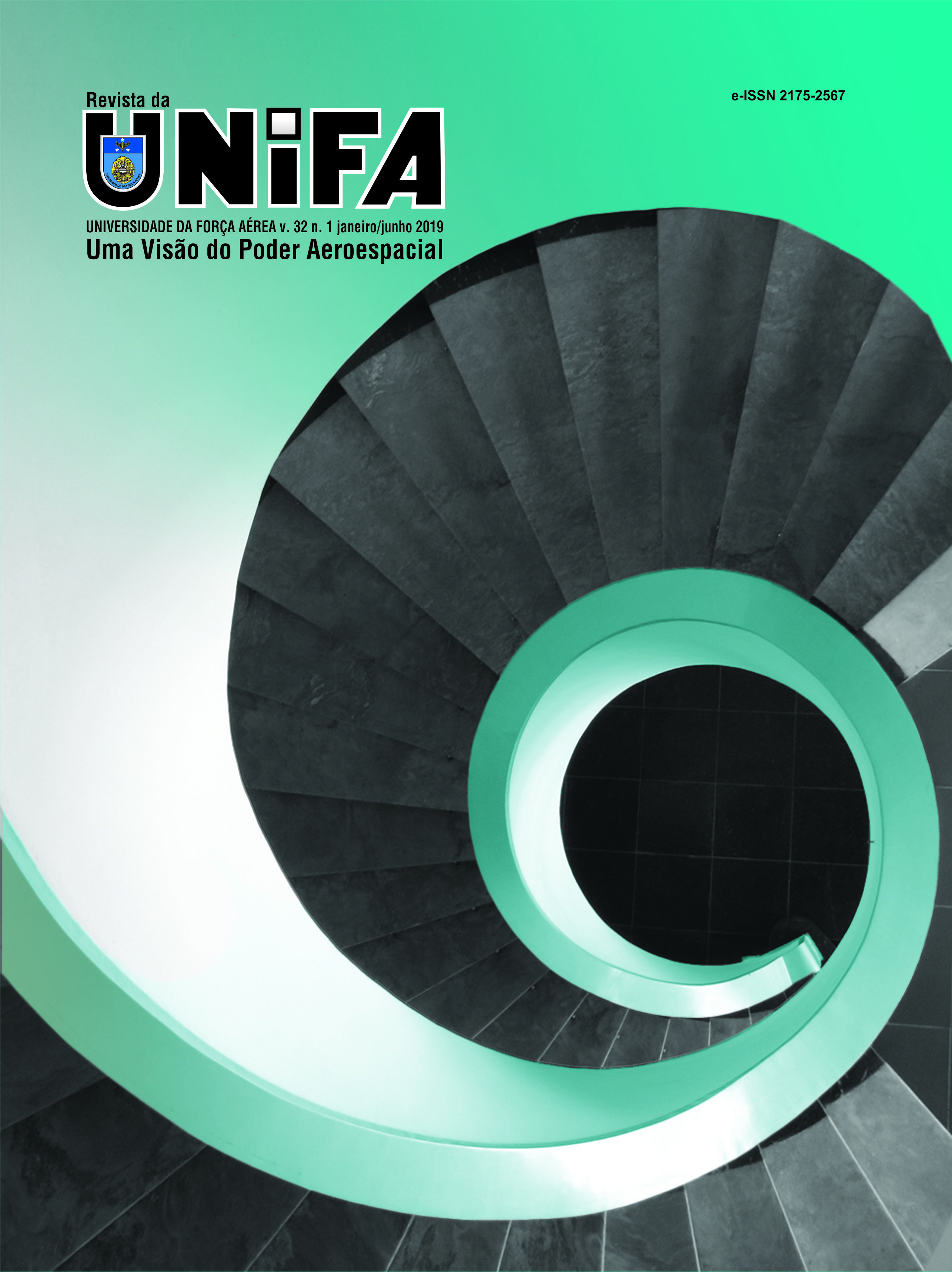Post-burn microscopic analysis of the material of the insert of the solid propellant rocket engine nozzle:
results (Part II)
DOI:
https://doi.org/10.22480/revunifa.2019.32.283Keywords:
Solid propulsion, Composite material, Tubing Insert, CRFC InsertAbstract
In part I of this work the procedure of preparation of samples and important concepts were presented, such as ablation in the motor tubing and also that of ablative and re-radiative thermal protections. In part II, (presented in the this study), the characterization by stereo microscopy, optical microscopy and scanning electron microscopy (SNAM) of the CRFC composite used as an insert in the tubing of the S43 engine was performed in the post-burning condition. The analysis by optical microscopy, performed in the region around the throat section, showed that the erosion of the sample was more pronounced on the surface than that observed in the regions farther from the passage of the gas flow. The scanning electron microscopy, performed in the region around the throat section, provided a more in-depth analysis of the morphology of the composite material, allowing to identify details of
the reinforcing rods, such as carbon fiber filaments and, in the pyrolytic carbon matrix, the different lamellae deposited by CVD.
References
AMERICAN SOCIETY FOR TESTING AND MATERIALS. ASTM E3-11: Standard guide for preparation of metallographic specimens. Pensilvânia. 2017.
GONÇALVES, A. Caracterização de materiais termoestruturais a base de compósitos de Carbono Reforçados com Fibras de Carbono (CRFC) e carbonos modificados com Carbeto de Silício (SiC). 2008. Tese (Doutorado em Engenharia Mecânica e Aeronáutica) – Instituto Tecnológico de Aeronáutica, São José dos Campos, SP, 2008.
LEE, S. M. Handbook of composite reinforcements. Palo Alto: WILEY-VCH, 1993.
LEVY NETO, F.; PARDINI, L. C. Compósitos estruturais: ciência e tecnologia. 2. ed. São Paulo: Blucher, 2016. 418p.
LI, W.; HUANG, H.; XU, X. A coupled thermal/fluid/ chemical/ablation method on surface ablation of charring composites, Int. J. Heat Mass Transf., v. 109, p. 725-736, 2017.
PARDINI, L. C.; GONÇALVES, A.; VIEIRA, S. D. Preformas multi-direcionais para compósitos termoestruturais. In: CONGRESSO BRASILEIRO DE ENGENHARIA E CIÊNCIA DOS MATERIAIS, 15., 2002, Natal. Anais [...]. Natal: CBCIMAT, 2002. p. 2161-2167.
RIBEIRO, J. L. P. Predição de propriedades elásticas de compósitos termo estruturais com reforço multidirecional. 2006. Dissertação (Mestrado em Engenharia Mecânica e Aeronáutica) – Instituto Tecnológico de Aeronáutica, São José dos Campos/SP, 2006. Disponível em: http://www. bdita.bibl.ita.br/tesesdigitais/lista_resumo.php?num_ tese=62825. Acesso em: 6 jul. 2018.
RIBEIRO, J. L. P.; GREGORI, M. L.; PARDINI, L. C. Predição das propriedades elásticas de compósitos termoestruturais com reforço multidirecional. Matéria, Rio de Janeiro, v. 13, n. 1, jan./mar. 2008.
RICCIO, A. et al. Optimum design of ablative thermal protection systems for atmospheric entry vehiclese. Appl. Therm. Eng., v. 119, p. 541-552, 2017.
SILVA, R. J. Plasma térmico para ablação de materiais utilizados como escudo de proteção térmica em sistemas aeroespaciais. Dissertação (Mestrado em Engenharia Mecânica e Aeronáutica) – Instituto Tecnológico de Aeronáutica, São José dos Campos, 2011. Disponível em: http://www.bdit. bibl.ita.br/tesesdigitais/lista_resumo.php?num_ tese=62019. Acesso em: 6 jul. 2018.
SILVA, W. G. Qualificação de materiais utilizados em sistemas de proteção térmica para veículos espaciais. Tese (Mestrado em Física dos Plasmas) - Instituto Tecnológico de Aeronáutica , São Jose dos Campos, 2009.
SUTTON, G. W. The initial development of ablation heat protection: an historical perspective, Sp. Chron., v. 59, p. 16-28, 2006.
Downloads
Published
Issue
Section
License
Copyright (c) 2019 Ronald Izidoro ReisRevista da UNIFA permite que o (s) autor (es) mantenha(m) seus direitos autorais sem restrições. Atribuição-NãoComercial 4.0 Internacional (CC BY-NC 4.0) - Revista da UNIFA é regida pela licença CC-BY-NC









